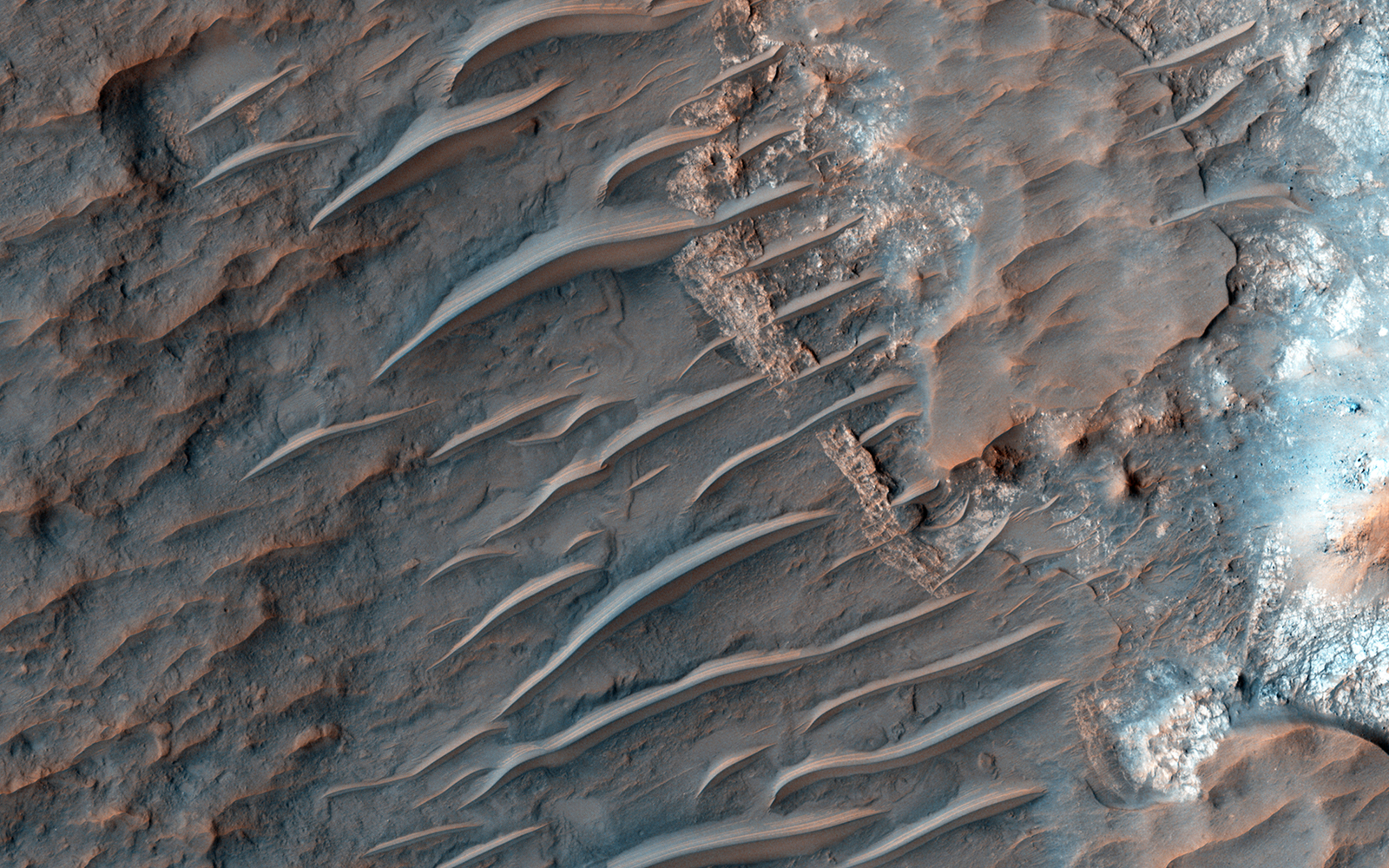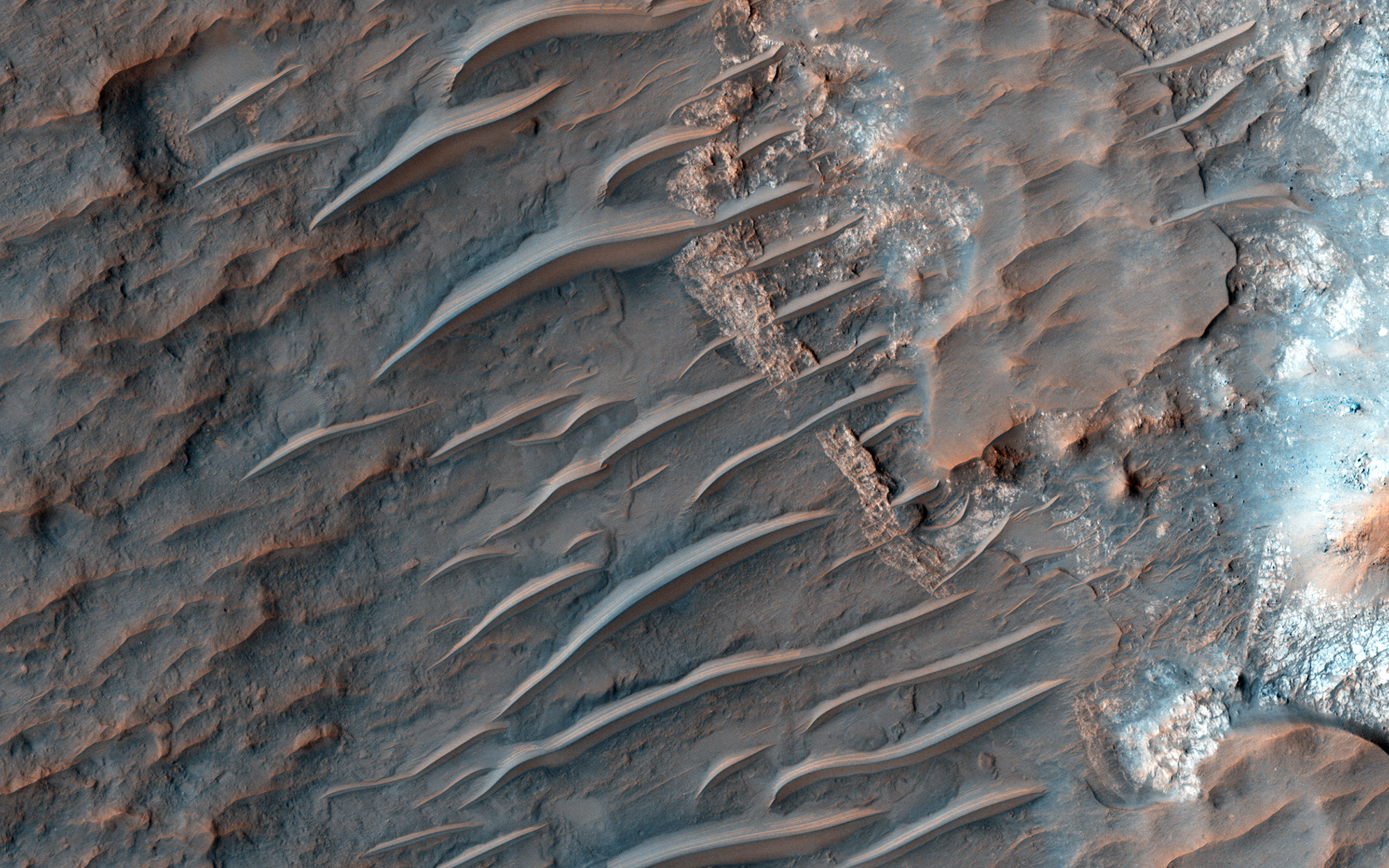MRO Spots Sand Stripes

| Credit | NASA/JPL-Caltech/University of Arizona |
|---|---|
| Language |
|
These long, smooth features are sand ridges shaped by the constant martian wind. Called TARs for “Transverse Aeolian Ridges,” these dune-like features stand up to 6 meters (18 feet) tall. A careful observation of these TARs shows clear striped layers on their northwest faces and fewer or none on the southeast sides. They run perpendicular, or at right angles to, the direction of the wind and often found in channels and crater interiors. Most TARs display no evidence of internal structure, so it is difficult to figure out exactly how they were formed.
One possible interpretation of this strange layering is that these particular TARs are made up of wedge-shaped layers created when the ripples grew vertically over time, as sand and dust collected at the crests of the ridges. It also suggests that the banded slopes faced upwind. Other TARs may form the same way, but it is hard to see their layers because the sand or dust is all the same color.

